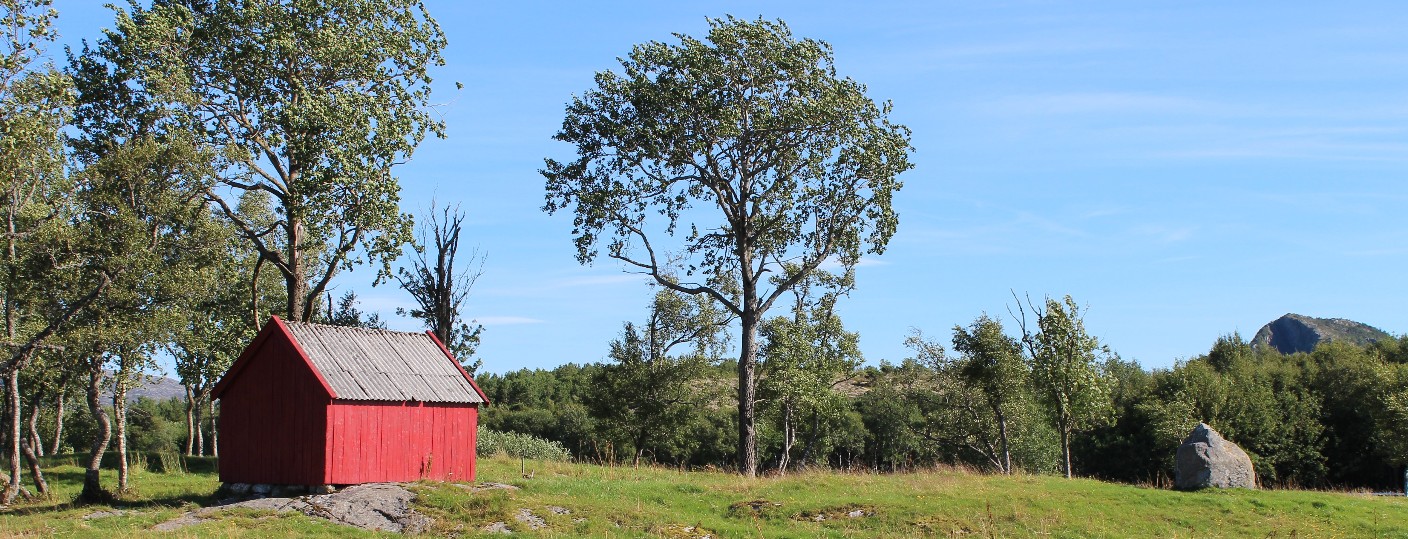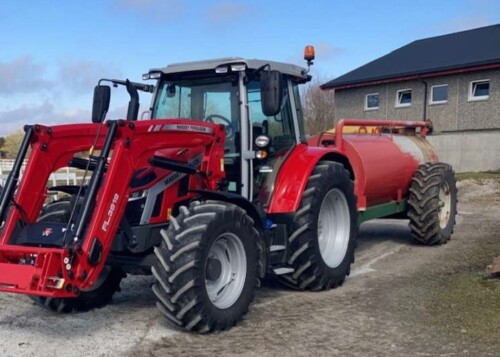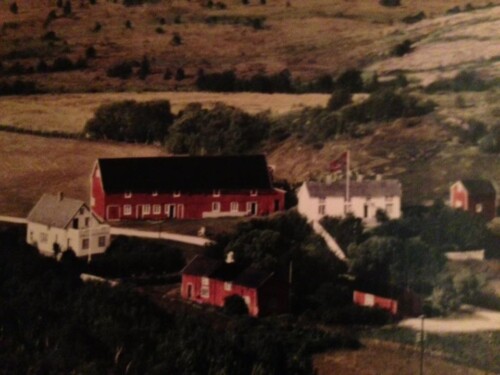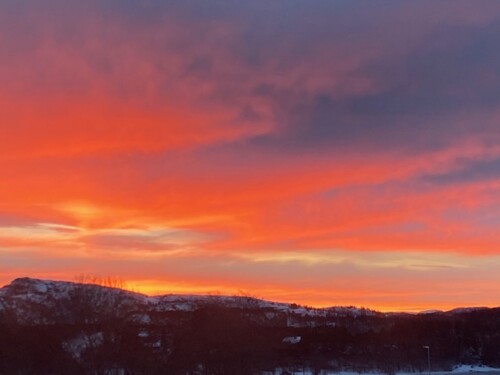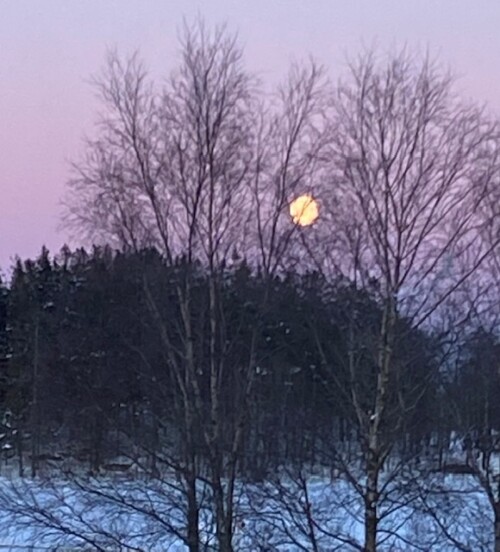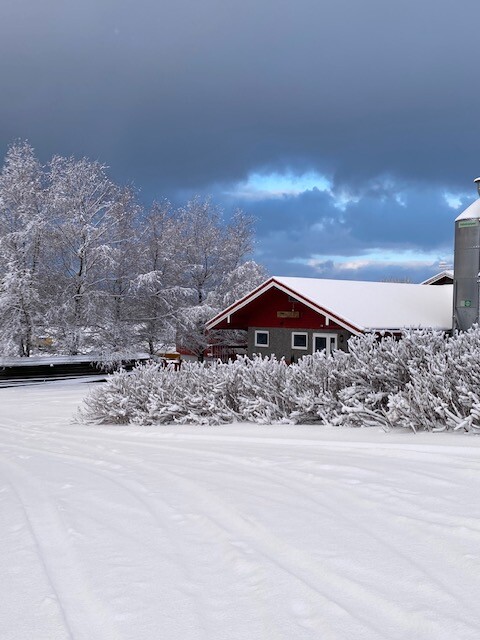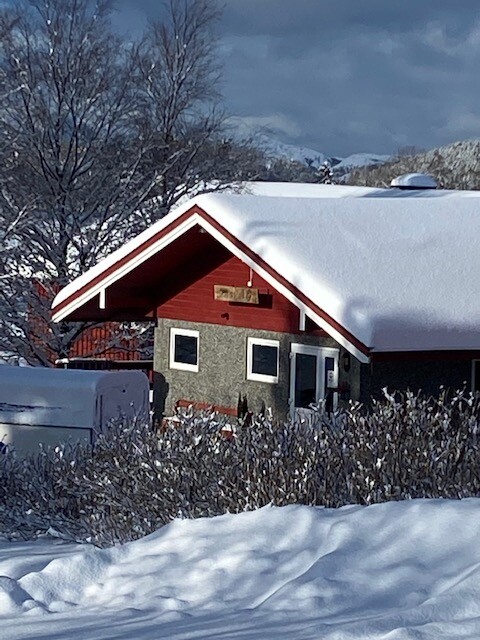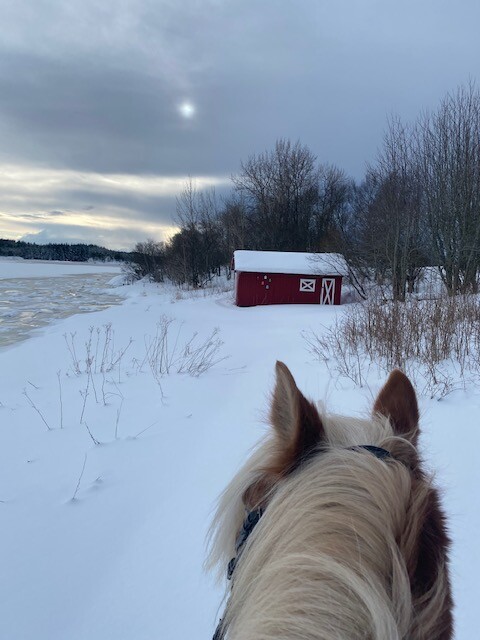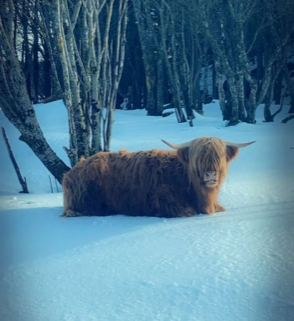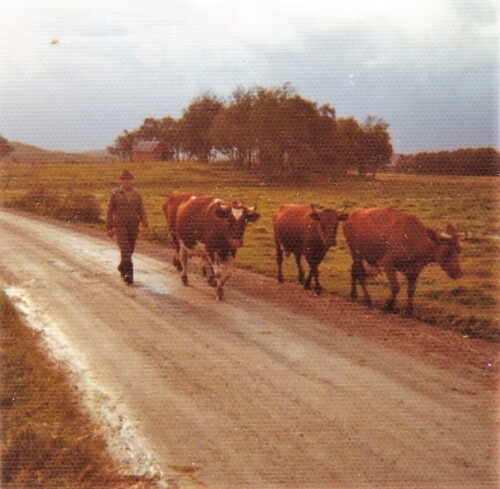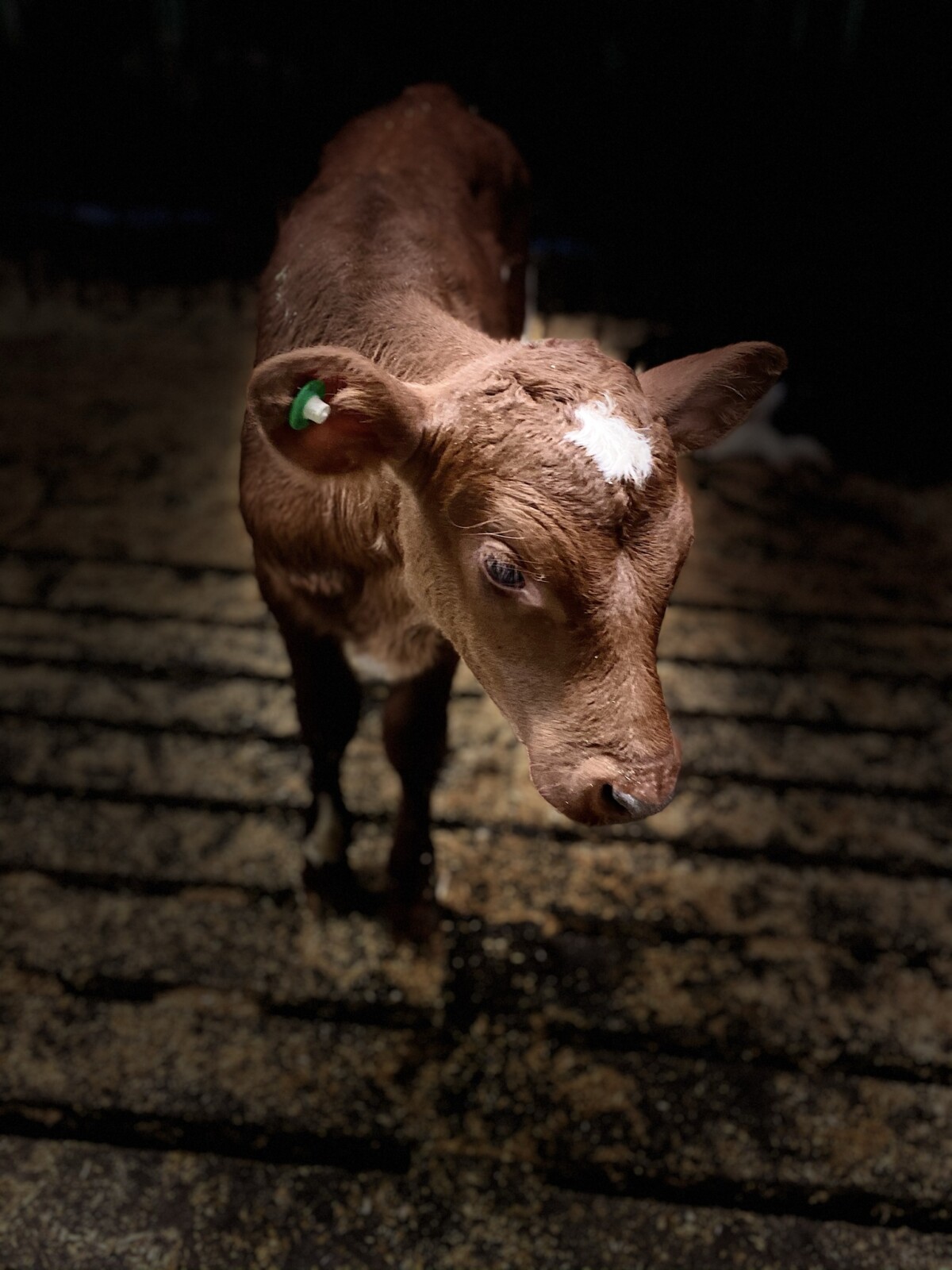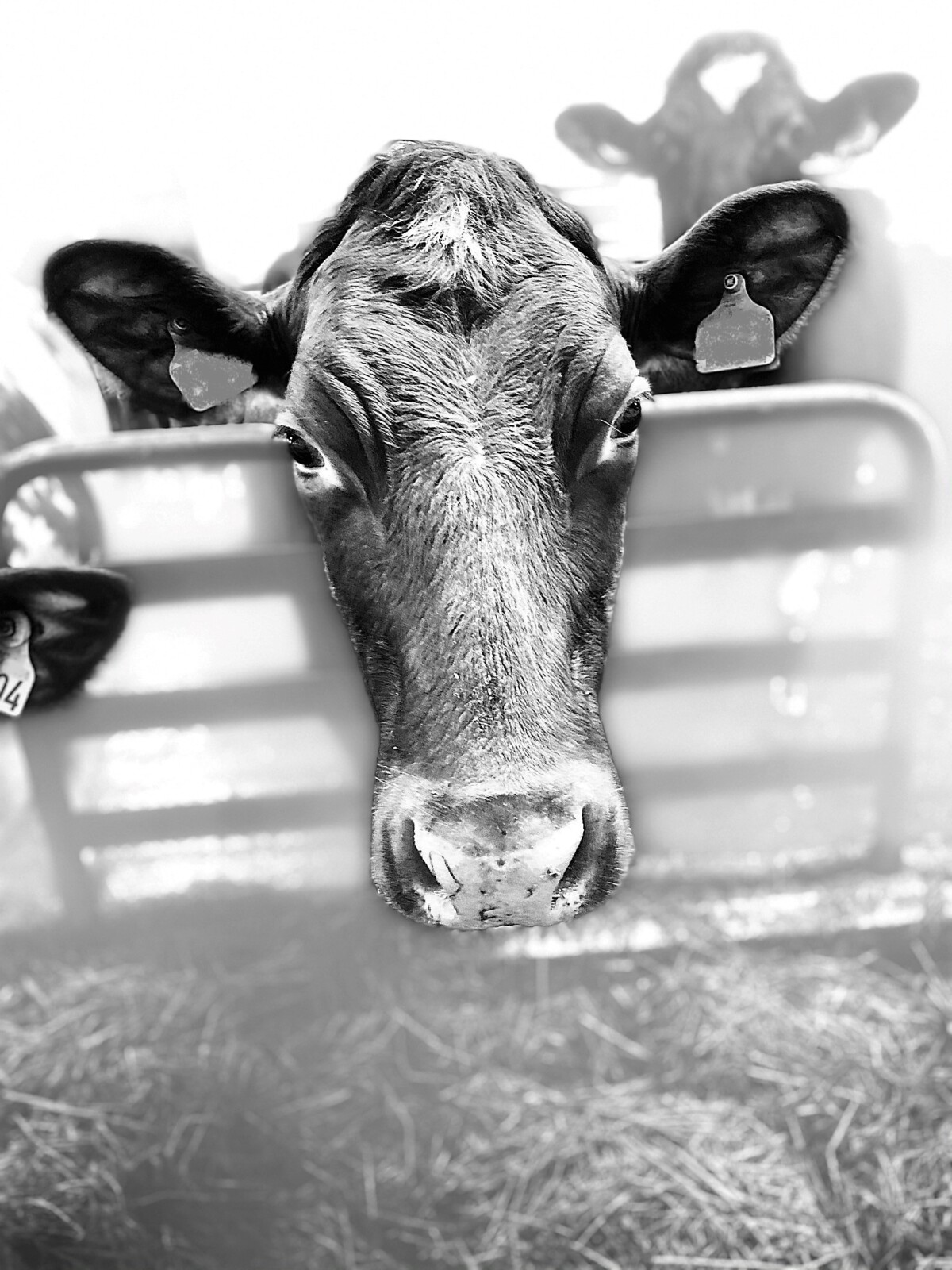The birds are singing, the plants are waking up and starting to grow, and the sweeet smells of Spring is comin’ around the corner!
Vaag back in the day – about 1965ish
This picture is from back in the 1960’s (probably), and the image shows Vaag, farm no. 23/1. The red buildings down left is Vågheim and above you it, the white house to the left is Nytun (still standing, just different color). Vågheim is where my riding track is located today. The buildings of Vågheim was torn down in the early 1990’s.
The area around was called Vågsgrenda, and consisted of around 10 little farms and severeal smaller houses. Today there are only two farms left. Some of the older farmbuildings are still standing, but most of them are gone. Modern times led to different patterns of locating houses, and now Vågsgrenda has sort of transformed into “Fikkan”. Fikkan is really on the other side of the bay Vågsvågen, but the name is now used for Vågsgrenda due to the school that used to be close by and now the houses built more centered in “municipal building areas” around the school-building.
First month of Spring….
The weather is warmer, still cold and an abundance of snow, but luckily the days are longer and brighter.
.
Morning view beginning of March
At the same time, the Moon has not gone quite away.
Snow February vs snow March:
But pretty as pretty can be:
While waiting for spring…
A glimpse of my grandfather and his cows headed back to the barn, some time in the 1960’s probably. In the background you can see the one building still intact on the farm – “Kalvhuset”.
We still do dairy on the farm, and the cows are mostly kind of cute. Today all the heifers are GS-tested, which means they have their DNA screened, and it is a little easier to foretel the future if it is going to be an awesome milk producer or not, or if it is at greater risk for illnesses for example. The farmer finds it rather interesting and fun to dig into such things.
Rocks…
In our nearby surroundings, there are a few special places with what seems like just ordinary piles of rocks… These piles of rock actually do have a history and an explanation behind them. They are not just piles of rocks.
The first pile of rocks worth mentioning, is located close to the top of Stonghaugen, the highest hill, next to the farm buildings. The view is spectacular from this point, and one might think these rocks might show a property marking of some sort. This is not the case. These rocks were placed at its current location a few decades ago by some young boys waiting for their father and older brother upon their return from the fisheries in Lofoten. The shape of the tallest rock, being flat on top, is perfect for sitting looking for action down on the fjord.

From this point, you see Vågsvågen and Arnøyfjorden quite well, and with a different direction, you see the great Folla.

Not far from Stonghaugen, there are some other piles of rock that are quite a bit larger of size, and quite older than the first, little pile of rocks.
In the area we call Klungvika, there are no less than two hills serving as someones resting place. This is marked by two, quite large rock-piles.







The view towards Folla from the largest of the graves is quite nice. And, the dark clouds are the bad weather coming in from the ocean in the west. Fascinating to observe the weather changes. Dramatic, spectacular and sometimes beautiful.

These graves are substantial monuments of old time history.
The Rhodesian Ridgebacks of Vaag
These two beauties look after the farm these days!

They might look scary to some, but mild at heart, they keep us with good company and companionship. Tough, strong willed, smart and kind dogs giving us plenty of fun moments… and some not so fun ones… Rosa is, for some odd reason, particularily fond of the lady of the house’s right-foot sneakers… She must somehow find the taste of these spesific shoes really appealing!




They do not hunt lions on these grounds, but they enjoy running along in the fields, playing with each other or just laying in their basket or beds chillaxing.




Sometimes, when not trying to eat right-foot shoes, Rosa likes to do things she is not allowed to… They both know the human sofas or chairs are not for dogs… but look who cares?


Tractors are awesome, but it can get crowed… Ridgebacks are quite a bit larger than a small dachshound.



Rosa Savannah and Luna Azul, loving sisters and partners in crime.
Pretty October Morning!
Sunset in late October!

Some mornings are better than others, and this one is one of the better ones. Enjoying the view from the main house! I am for sure off to a good start, and I hope you are too!
Welcoming another season!

Every season definetely has its charm!

Fall is a great season, especially when the weather is nice and warm, yet not so nice when the rain falls down and the storms set in. Harvest is done, the barn is cleaned, and soon the cattle are back inside again, unless the fall turns out very sunny and dry.
The Scottish clan on this farm has grown a bit in size these last days, welcoming baby Pia into the world on a nice sunny morning, early September.

And, the farmer lady got to rearrange her plants just a bit. Old ones going out, new ones coming in.


Klungvika

Klunger er et annet ord for nyper eller kratt av ulike nyperosebusker eller lignende blomstrende busker med torner. Disse buskene vokser det mengder av nede ved sjøen akkurat i området nede ved Vågsvågen som kalles Klungvika; derav navnet. Og, mengder av busker gir mange nyper, og det igjen gir muligheter for hjemmelaget nypesyltetøy for den som orker å plukke nyper og pelle frø. Nypesyltetøy smaker nydelig godt, og jeg tar gjerne i mot en smak.


Fun fact: The name of this part of the farm comes from a plant there is an abundance of right in this specific area. Down by the seashore it grows loads of bushes of rosehip. In Norwegian these bushes are called nyper or klunger; hence the name Klungvika. Plenty bushes give plenty berries for the ones who feel like picking them and ridding the berries of their seeds. The jam tastes delicious!
Heifers at sunset!
Some evenings are just magic!

The young heifers enjoy a late night snack while the farmer lady is counting her herd…

